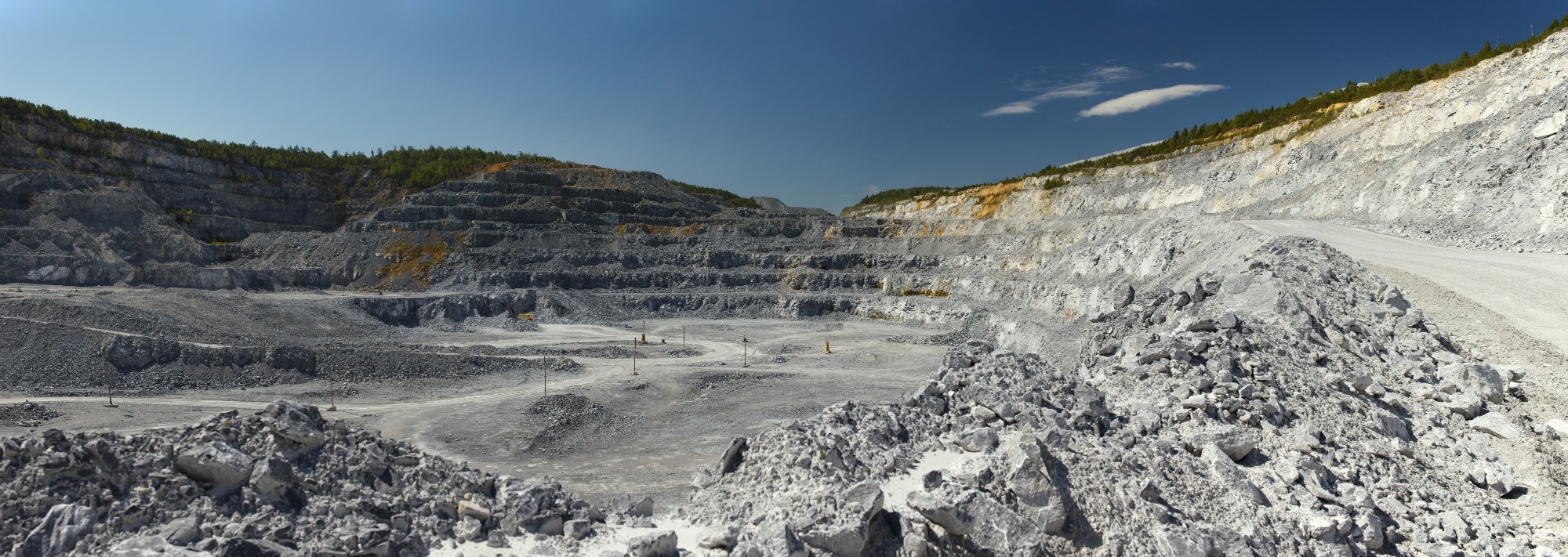Researchers have revealed how abandoned quarry caverns respond to stress and instability, offering new tools to manage hazards and unlock safe, sustainable reuse.

Image Credit: Salienko Evgenii/Shutterstock.com
The study, published in Scientific Reports, investigated the geological hazard development characteristics and stability of hard rock mined cavern groups at a large artificial quarrying site in China. Researchers analyzed abandoned caverns’ mechanical behavior and failure mechanisms using field investigations, numerical simulations, and structural modeling.
The findings highlight how mining activities affect geological stability and provide insights for assessing risks and promoting the sustainable reuse of these underground structures.
Distinct Characteristics of Hard Rock Caverns
Hard rock mined caverns, mainly those formed through artificial quarrying, differ significantly from coal mine goafs in geometry, overburden conditions, and stress distribution. Numerous small-scale non-metallic mines in China, particularly in limestone and granite formations, have created many such caverns. These irregular and shallow structures are often abandoned due to the lack of standardized evaluation and monitoring systems.
Unlike coal mine goafs, which are prone to large-scale subsidence, hard rock caverns show limited deformation because of the high strength and brittleness of the surrounding rock. However, external factors such as weathering, rainfall, and seismic activity can reduce their stability. Therefore, understanding these caverns’ behavior and hazard evolution is important for scientific study and potential reuse in urban and rural development.
Methodology for Assessing Cavern Stability
Researchers focused on a representative group of abandoned quarry caverns in China, some of which have been partially repurposed as tourist sites. The area features hilly terrain with elevations of 100 to 400 meters, with bedrock primarily composed of basalt, andesite, and tuff, rocks known for their high strength but also for their fractured structures.
Extensive field surveys mapped joint orientations, rock mass properties, and existing hazard zones to evaluate cavern stability. Unmanned aerial vehicle (UAV) photogrammetry and terrestrial three-dimensional (3D) laser scanning were used to create a high-resolution digital elevation model (DEM) and detailed cavern geometry. These datasets were integrated into a 3D finite element model using ANSYS 12.0, treating the rock mass as a homogeneous, isotropic elastic material. Eleven cross-sectional profiles (P01-P11) were analyzed to determine stress distribution and deformation patterns, focusing on key structural features like a column-supported cavern (G cavern) and a cantilevered arch-shaped bridge.
Analyzing Stress Distribution and Failure Mechanisms
The simulation results showed complex stress distributions and deformation patterns. In section P01, vertical tensile stresses were concentrated at the arch of Cavern B. In contrast, compressive stresses dominated the pillar zones of Cavern A. Section P02, representing a multi-cavern coupling zone, recorded vertical settlements of up to 39.83 mm and horizontal displacements of 40.62 mm, indicating advanced deformation and high failure risk.
The analysis identified four main failure modes: sliding, toppling, tensile cracking, and combined tensile-toppling. Sliding failures were linked to gently dipping joints and increased pore water pressure during rainfall, while toppling failures occurred in vertically elongated rock masses with weak lateral support. Tensile cracking was observed in overhanging blocks with near-penetrating joints, and tensile-toppling failures developed in suspended rock masses with complex joint networks. A total of 26 unstable rock masses were identified, primarily in Zones F and Y, which demonstrated high joint density, structural heterogeneity, and progressive failure indicators such as fracture propagation and surface exfoliation.
Implications for Safety and Sustainable Land Use
The findings highlight the importance of combining geological mapping, structural modeling, and numerical simulation for assessing the stability of abandoned hard rock caverns. Identifying stress concentration zones, mainly at arch roofs, pillar bases, and inter-cavern connections, provides a solid foundation for prioritizing monitoring and reinforcement. These insights are key for mining regions transitioning toward urban use or tourism development.
Given the hard rock caverns' spatial complexity and variability, tailored hazard mitigation strategies are essential. The study recommends implementing early-warning systems, conducting dynamic stability assessments, and applying targeted reinforcement to ensure safe reuse. Technologies such as UAV photogrammetry, 3D laser scanning, and finite element modeling enable precise characterization of complex structures and support informed decision-making in post-mining land management.
Conclusions and Future Research Directions
This study presented a comprehensive framework for correctly evaluating hard rock mined cavern groups' geological hazards and structural stability. Integrating field data, remote sensing, and numerical modeling provides an in-depth understanding of stress evolution and failure mechanisms in complex cavern systems. While the overall structural integrity of the studied cavern group remains stable, certain localized zones show notable instability due to stress concentration and joint development. These areas require continuous monitoring and targeted reinforcement to prevent progressive failure.
Future work should focus on establishing standardized evaluation protocols and explore the combined effects of hydrogeological conditions, seismic activity, and human-induced disturbances on cavern behavior. Such advancements are essential for converting abandoned mining voids into safe, functional, and sustainable spaces that support long-term land use and hazard mitigation in mining-intensive regions.
Journal Reference
Wei, H., Wu, S., Wu, Z. et al. (2025). Geological hazard development characteristics and stability analysis of hard rock mined cavern groups: case insights from a large-scale artificial quarrying area in China. Sci Rep 15, 36084. DOI: 10.1038/s41598-025-19994-5, https://www.nature.com/articles/s41598-025-19994-5
Disclaimer: The views expressed here are those of the author expressed in their private capacity and do not necessarily represent the views of AZoM.com Limited T/A AZoNetwork the owner and operator of this website. This disclaimer forms part of the Terms and conditions of use of this website.